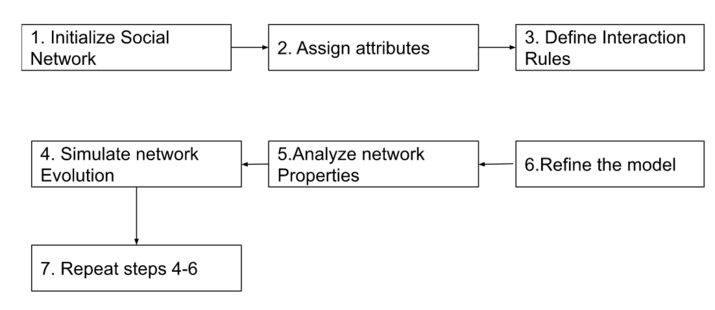
 Data Structure
Data Structure Networking
Networking RDBMS
RDBMS Operating System
Operating System Java
Java MS Excel
MS Excel iOS
iOS HTML
HTML CSS
CSS Android
Android Python
Python C Programming
C Programming C++
C++ C#
C# MongoDB
MongoDB MySQL
MySQL Javascript
Javascript PHP
PHP
- Selected Reading
- UPSC IAS Exams Notes
- Developer's Best Practices
- Questions and Answers
- Effective Resume Writing
- HR Interview Questions
- Computer Glossary
- Who is Who
Fatman Evolutionary Model in Social Networks
The Fatman model is a model that explains how social media grows and changes over time. Social Media has become an integral part of everyone's life. Researchers are constantly trying to understand the social media growth and behavior associated with it. In this article, we will understand the Fatman model and its significance in social media network Analysis.
Fatman Model
The Fatman model was first introduced by Alain Barrat, Marc Barthélemy, and Alessandro Vespignani in a paper published in 2004. Fatman's model says that the growth of social networks is influenced by two main factors ?
Preferential Attachment ?Preferential attachment refers to the tendency of nodes in a network to connect to nodes that already have a large number of connections.
Fitness ? Fitness refers to the intrinsic properties of nodes that make them more or less likely to be connected to other nodes in the network.
According to the Fatman model, each node has a fitness value that determines its likeness to receive more or fewer connections. Nodes with higher fitness values receive more connections while the nodes with fewer fitness values receive less number of connections. The fitness value is determined by a set of characteristics that are specific to the nodes such as age, gender, income, education, and so on.
The model is called the Fatman model because the distribution of fitness value to the nodes follows a fat-tailed distribution. In fat-tailed statistical distribution, the tail has a large number of values compared to normal distribution. In the context of the Fatman model, a fat-tailed distribution means that there are a small number of nodes in the network with very high fitness values and a large number of nodes with low fitness values.
The Fatman model is based on the study of various social networks like online social networks, scientific collaboration networks, and transportation networks. One common thing found in all social media is that the fitness value determines the structure and evolution of the model. A network having a fat-tailed distribution of fitness values tends to be more robust than the networks with a normal distribution of fitness values.
The Fatman model has also been used to study the role of preferential attachment and fitness in the growth of social networks. Studies have shown that both preferential attachment and fitness are important factors in the growth of social networks and that their relative importance depends on the specific characteristics of the network being studied.
Here is a flowchart to summarize the main steps of the Fatman Evolutionary Model:

Initialize a social network ?Create a network of individuals and connections between them.
Assign attributes to individuals ?Each individual in the network is assigned a set of attributes, such as age, gender, occupation, and interests.
Define interaction rules ? Define the rules that govern how individuals interact with each other. This can include rules such as how likely two individuals are to form a connection based on their attributes and the strength of their existing connections.
Simulate network evolution ?Simulate the evolution of the network over time using the interaction rules defined in step 3. This involves adding new connections, breaking existing connections, and modifying the attributes of individuals.
Analyze network properties ? Analyze the resulting network properties, such as the degree distribution, clustering coefficient, and community structure.
Refine the model ? Based on the analysis, refine the model by adjusting the interaction rules or adding new attributes to better capture the real-world dynamics of social networks.
Repeat steps 4-6 ? Iterate through steps 4-6 until the model accurately reflects the properties of real-world social networks.
Conclusion
In this article, we have discussed the Fatman Evolution model in Social networks and how it is used to understand the growth and evolution of social media networks. The model considers both preferential attachment and fitness in shaping the structure of social networks and provides insights into how the distribution of fitness values in a network can impact its resilience and robustness.

